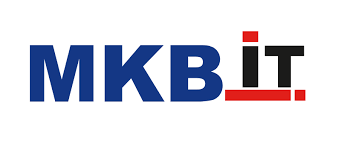MDR (Managed Detection and Response) and CDR (Content Disarm and Reconstruction) represent two distinct approaches to cybersecurity that complement one another. Here are reasons why CDR is a valuable addition to MDR:
In conclusion, while MDR is a valuable service assisting organizations in detecting and responding to threats, CDR provides an additional security layer that proactively extracts harmful content from files. Combining both approaches can lead to a more robust and comprehensive security strategy.
XDR (Extended Detection and Response) and CDR (Content Disarm and Reconstruction) are both valuable cybersecurity approaches, yet they focus on different facets of defense. Here are some reasons why CDR is a valuable addition to XDR:
In conclusion, while XDR is a potent tool in an organization’s cybersecurity arsenal, CDR provides a specialized and proactive approach to tackle threats at their source. Combining both approaches can yield a more robust and comprehensive cybersecurity strategy.
EDR (Endpoint Detection and Response) and CDR (Content Disarm and Reconstruction) are both valuable cybersecurity solutions, yet they focus on different areas and capabilities. Here are some reasons why CDR is a vital addition:
In conclusion, although EDR is a powerful and essential tool for modern organizations, integrating CDR can further bolster an organization’s security posture by providing an additional and specialized defense against malware and other file-based threats.
Antivirus software is certainly a step in the right direction for basic security. However, CDR (Content Disarm and Reconstruction) offers certain advantages that go beyond the capabilities of traditional antivirus software. Here are some reasons why CDR would be a valuable addition to antivirus:
In conclusion, while traditional antivirus remains an essential component of any security strategy, CDR offers a specialized and proactive approach that enhances an organization’s security infrastructure. Combining both provides a more comprehensive defense against a wide range of cyber threats.
There are two price lists available: the regular retail price list and a price list for IT service providers. In the market, Bodyguard.io offers the most attractive price per user. The reason for this accessible pricing model is that we want to protect as many organizations as possible. Please get in touch to receive the price list.
Bodyguard CDR impacts various CIS Controls to strengthen security policies. Here are some controls that are relevant:
Yes, support in various forms is available through our partner. If desired, 24×7 support can even be provided.
The CDR software processes attachments locally on the employee’s device, ensuring sensitive file content doesn’t leave the device.
However, CDR metadata is collected by the Bodyguard platform to enable reporting via the online customer portal. The metadata includes audit logs and information regarding CDR performance.
The Bodyguard platform runs on AWS infrastructure with data centers located in the EU.
View the data flow chart here for a visual explanation of the data processing.
We are a cybersecurity software company and we continuously evolve. As a customer, you will have access to our plans for improving and expanding the software.
Yes, the original source of the file remains intact. The CDR software processes attachments locally on the device. Files originate from various sources, including but not limited to web browsers, Outlook, Zoom, and Teams. After local processing of a file, the original file remains intact on the servers of the respective application.
Yes, for both IT service providers and organizations, an API integration is available which allows extraction of CDR audit logs and statistics. This information can be utilized in various ways, for instance, to enrich your own reporting or to feed external SIEM systems.
Get in touch with no obligation or book a demo directly





